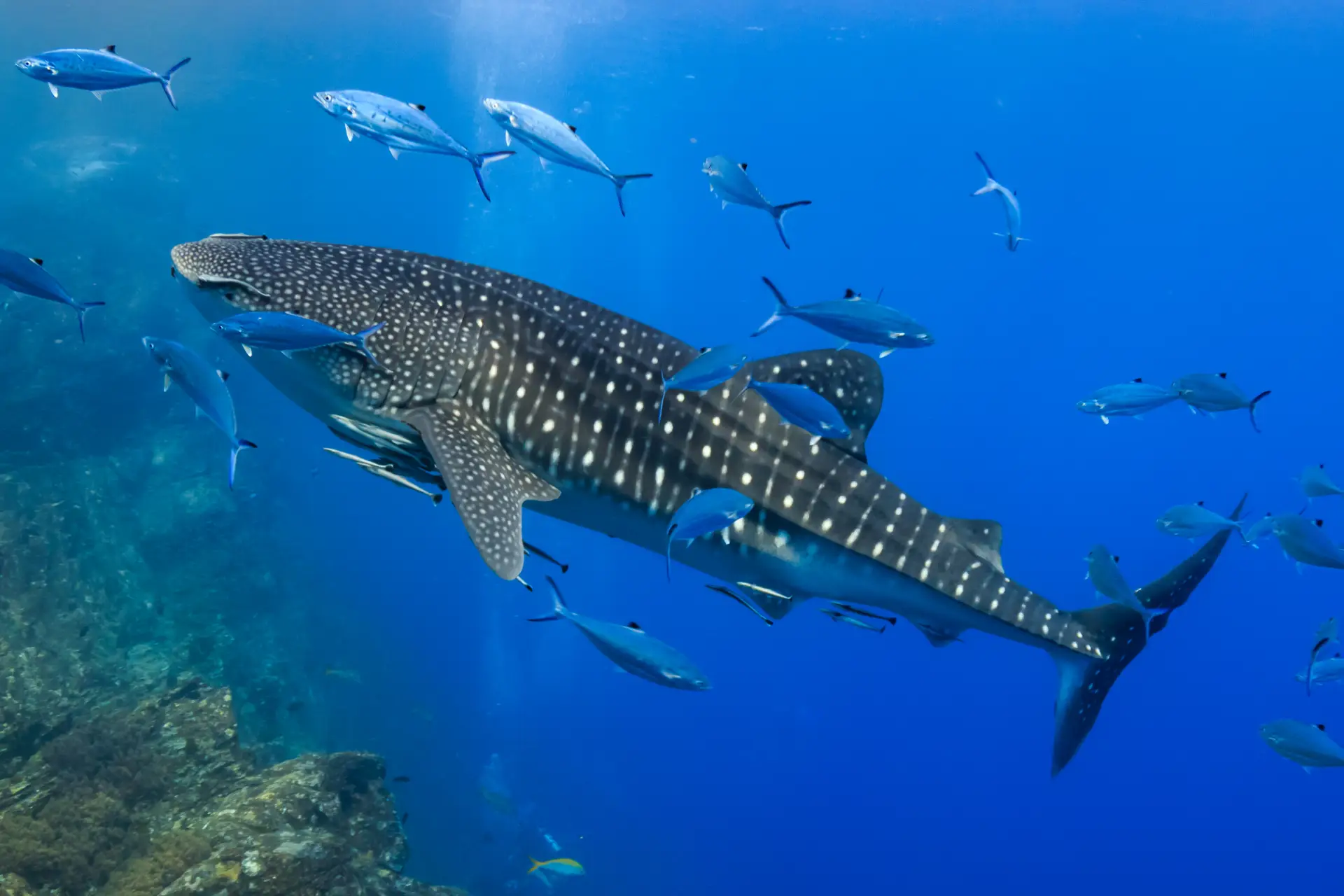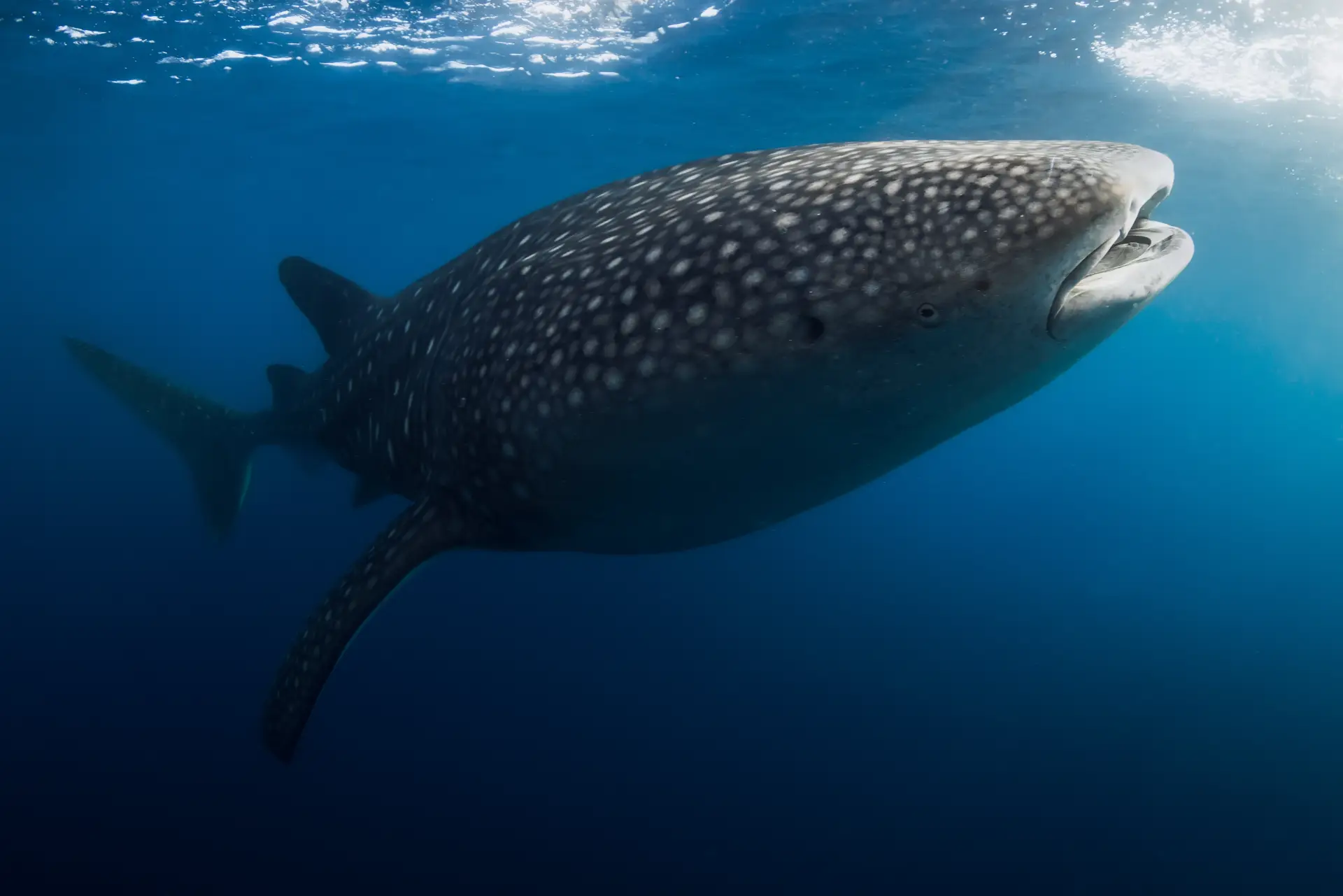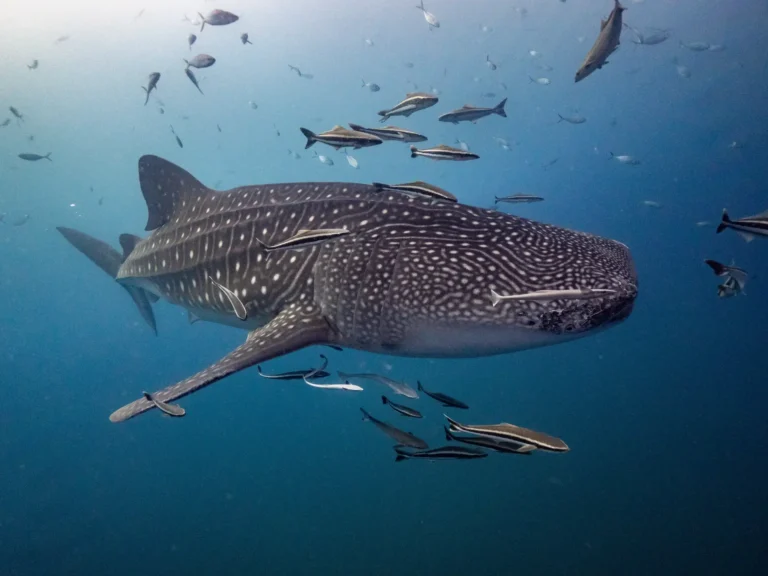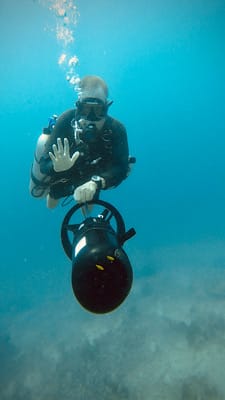10 Mind-Blowing Facts You Didn’t Know About Whale Sharks
There are few moments in a diver’s life that can compare to the first time they see a whale shark. A shadow emerges from the deep blue, slowly taking form. It’s not just big; it’s immense. A creature the size of a school bus, adorned with a celestial pattern of white spots, glides past with a serene and ancient grace. It’s a moment that recalibrates your sense of scale and leaves you in breathless awe.
Here in Bohol, we are incredibly fortunate to witness these gentle giants during their seasonal visits. But beyond their breathtaking size, whale sharks are one of the most fascinating and mysterious creatures in the ocean. At Sierra Madre Divers, we believe that understanding these animals deepens our respect for them.
So, let’s dive past the surface and explore ten mind-blowing facts that will give you a whole new appreciation for the world’s largest fish.
1. They Are Sharks, Not Whales (And the Biggest Fish of All!)
This is the most fundamental fact, but it’s worth clarifying! Despite their size and “whale” moniker, they are not air-breathing mammals like humpbacks or blue whales. The whale shark (Rhincodon typus) is a type of cartilaginous fish, belonging to the same class as great whites and hammerheads. They are, unequivocally, the largest fish in the sea. An average adult measures between 8 to 12 meters (26 to 40 feet) long, but they have been reliably recorded at over 18 meters (60 feet). That’s longer than a city bus!

2. Their Spots Are a Celestial Fingerprint
The beautiful pattern of pale spots and stripes covering a whale shark’s dark grey skin isn’t just for show. This pattern is completely unique to each individual, just like a human fingerprint. Scientists use these spot patterns to identify and track individual sharks around the world. They use sophisticated photo-identification software, originally developed for mapping stars in the night sky, to analyze photos taken by researchers and citizen scientists (like you!). This allows them to monitor populations, understand migration routes, and better protect these magnificent animals.

3. They Are Filter-Feeding Pacifists
How does the ocean’s biggest fish eat? Very, very gently. Whale sharks are filter feeders, one of only three shark species to feed this way. They swim with their colossal mouths open (which can be up to 1.5 meters wide!) in a process called “ram-jet” feeding, passively filtering enormous volumes of water. They also hang vertically and suck in huge gulps of water. Their diet consists of the ocean’s tiniest inhabitants: plankton, krill, fish eggs, and small squid. Their gills have specialized filtering pads that separate food from water. It’s a peaceful, efficient method that allows them to thrive without ever chasing down large prey.
4. They Have Thousands of Teeth They Don’t Use
This is one of the most wonderfully bizarre facts about whale sharks. If you were able to peek inside that cavernous mouth, you would find over 3,000 teeth arranged in about 300 rows. But here’s the strange part: each tooth is tiny, measuring only a few millimeters long. They play no role in feeding. Scientists believe these teeth are vestigial structures—an evolutionary leftover from an ancestor that did eat larger prey. They are a fascinating remnant of the shark’s deep evolutionary past.

5. They Have Armored Eyeballs
When you’re a massive, slow-moving creature, you need some unique ways to protect yourself. One of the whale shark’s most incredible adaptations is its method of eye protection. Their small eyes are covered in tiny, hard, tooth-like structures called dermal denticles—the same structures that make up their sandpaper-like skin. In effect, they have armored eyeballs! Furthermore, if a threat gets too close, a whale shark has the remarkable ability to retract its entire eyeball back into its socket, protecting it from harm.
6. They Are One of the Longest-Lived Fish
Whale sharks are the wise old souls of the ocean. They are extremely long-lived, with current estimates suggesting they can live between 80 to 130 years, and possibly even longer! They grow very slowly and reach sexual maturity late in life, at around 30 years old. This slow-paced life cycle makes their populations particularly vulnerable to threats, as it takes a very long time for them to recover from any losses.
7. They Are Mysterious World Travelers
Where do whale sharks go? For a long time, this was a complete mystery. Thanks to satellite tagging, we now know they are incredible long-distance travelers. One tagged whale shark, nicknamed “Anne,” was tracked for over 20,000 kilometers (12,400 miles) across the Pacific Ocean. They travel vast distances between feeding hotspots and breeding grounds, often diving to depths of over 1,800 meters (6,000 feet) into the cold, dark abyss. We are only just beginning to map out and understand these epic, ocean-spanning journeys.
8. They Give Birth to Live Young
For centuries, no one had ever witnessed a whale shark giving birth, and their reproductive strategy was unknown. That changed when a pregnant female was captured in 1995, revealing an incredible secret. Whale sharks are ovoviviparous, which means that eggs hatch inside the mother’s body, and she gives birth to a litter of live, fully-formed pups. That one female was found to be carrying over 300 embryos, all at different stages of development, suggesting she can store sperm and fertilize eggs over a long period.
9. Their “Gentle Giant” Nickname is Well-Earned
Despite their immense size and being a member of the shark family, whale sharks pose absolutely no threat to humans. They are famously docile and placid creatures. Their gentle nature is likely due to their lifestyle; as massive filter feeders with no natural predators (other than humans), they simply have no need for aggression. This placid demeanor is what allows for the humbling, safe, and truly unforgettable experience of swimming alongside them.
10. They Are, Tragically, Endangered
This final fact is a crucial call to action. The IUCN (International Union for Conservation of Nature) lists the whale shark as Endangered. Their populations have declined significantly due to threats like illegal fishing, bycatch (being accidentally caught in nets), and injuries from boat strikes. They are also threatened by plastic pollution and the degradation of their food sources. This is why responsible tourism is not just a preference; it is a necessity. Choosing ethical tours that prioritize the well-being of the sharks is a direct way to contribute to their conservation.
From their fingerprint-like spots to their armored eyes, the whale shark is a masterpiece of evolution. Witnessing one in person is a privilege that comes with the responsibility to protect them. Join us at Sierra Madre Divers for a chance to respectfully encounter these gentle giants and contribute to a tourism model that helps ensure their survival for generations to come.







